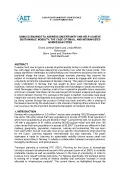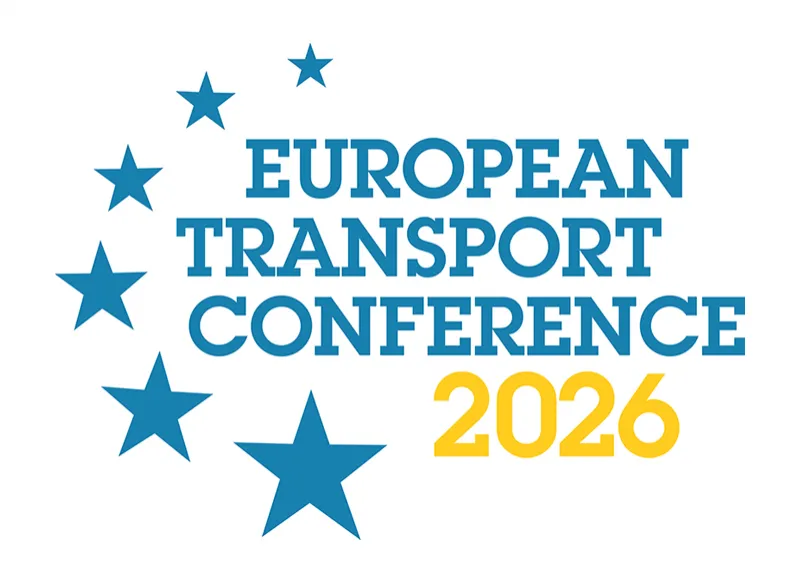-
Past ETC Papers

Browse, search and view papers from the past AET Conferences.
-
Members' Area

AET promotes networking and exchange of ideas, information and opportunities amongst members.
Conference Papers 2023
Milan, Italy
ETC Conference Papers 2023
Using scenarios to address uncertainty and help achieve sustainable mobility: The case of small and medium-sized Norwegian cities
Seminar
Day 2 (7 Sep 2023), Session 6, Scenarios, 14:30 - 16:00
Status
Accepted, documents submitted
Submitted by / Abstract owner
Eivind Jamholt Baera
Authors
Eivind Jamholt Baera, Linda Alfheim, Glenn Lyons and Charlene Rohr
Short abstract
Cities in Norway face uncertain future settings – so how to invest for the best in terms of mobility? Developing four possible 2050 futures has helped us think and collaboratively engage with uncertainty and consider how they can support planning.
Abstract
Norway with a population of 5.5 million and an area covering 150,000 square miles, has some 100 urban areas, three quarters of which have populations of around 20,000 or less. Compare this with, for example, the UK with a population of 67 million covering 95,000 square miles and with over 70 urban areas with populations each in excess of 100,000. Countries are different in their makeup, geography, population, resources, cultures and economies. We can learn from each other, but we must also look at our specific circumstances when planning for the future. Learning happens internationally but also nationally. This paper addresses a basis for planning for sustainable mobility futures across small and medium-sized cities in Norway. It reflects a collaboration between transport planners, policymakers and foresight practitioners.
Planning for the future is increasingly turning to scenario development as part of the process. Transport planning is evolving. Coming from a longer period of relative stable and continued increase in funds allocated to infrastructure projects, the current theme in Norway evolves around stricter budget prioritising for public spending, and a sharpened focus on achieving sustainability and climate reduction goals within the transport sector. The development of the scenarios in this paper was commissioned by the Norwegian Public Roads Administration as part of their sectoral responsibility related to urban planning and net-zero-growth for transport.
Exploring uncertainty is best done as a participatory process – multiple and diverse minds make for a better prospect to think and learn, together. Through online workshops, drivers of change have been identified and considered according to relative importance and uncertainty. This then created the basis for prioritising a subset of uncertain and important drivers of change: (i) geopolitical relations and co-operation; (ii) attitudes towards consumption, conservation of natural resources and raw materials; (iii) prevalence of autonomous transport; (iv) emergence of alternative business models; (v) the authorities' role in shaping rules and regulations; (vi) changes in production and supply chains; and (vii) desire related to digital accessibility and interaction. A set of scenarios were subsequently identified – each scenario being based upon a different combination of changes in these drivers. Narrative richness was then added to each combination ‘wireframe’ to create depictions of transport and society.
The four scenarios reflect possible divergent alternative future contexts as a basis for planning how to shape the future in pursuit of improvement in mobility:
(i) Travelling Alone – a future in which class and generational differences, alongside differences in working in the physical and digital worlds, lead to a variety of behaviours and travel needs to the detriment of public transport and shared mobility;
(ii) A Simpler Life – extensive changes in priorities and attitudes associated with fairness and environmental sustainability concerns has led to a greater focus on living locally and travelling sustainable with tech-innovation not the driver of mobility in ways expected by some in the 2020s;
(iii) Together We Are Stronger – a future in which the primacy of addressing climate change has shaped collaborative and collective change with a prevalence of technology-enabled sustainable mobility and digital substitution for travel; and
(iv) Save Us From Ourselves –small and medium-sized cities are suffering the consequences of the profligacy of previous generations and the consequences of adverse climate change with floundering efforts to deliver effective mobility solutions.
Such scenario development leads to the ‘so what for planning?’ question. It is suggested that scenario development can in turn help with: (i) strategies, reflections and path choices with regard to possible versus desired development, for example related to the Norwegian National Transport Plan; (ii) assessing and comparing specific projects, measures and alternatives (for example in connection with goals and measures to implement in a city or region); and (iii) creating participation, dialogue and co-creation among stakeholders. Specifically in relation to the four scenarios, it is suggested that these be treated as ‘scenarios in common’ that can be used across different small and medium-sized cities in Norway. Each urban area will have its own unique circumstances, and these should accompany use of the scenarios to help tailor robust investment decisions that can accommodate uncertainty to help shape the future. National support can continue to be provided through horizon scanning and periodic updates to such ‘common’ scenarios to help ensure that the ongoing dynamics and uncertainties in mobility are being accounted for.
The project, and the subsequent work that will follow, aims to accomplish a major step forward within the transportation planning field in Norway – contributing to closing the gap between theory and practice related to scenario and transport planning.
Programme committee
Planning for Sustainable Land Use and Transport
Topic
Cities and transport – integrated planning, liveable cities, active transport
Documents:


Association For
European Transport
Forester House
Doctors Lane
Henley-in-Arden
Warwickshire, UK
B95 5AW
+44 (0) 15 64 793552
VAT number: 710 1866 64
Conference Supporters & Endorsers




Legal Entity
The Association for European Transport is registered as an Association ('vereniging') with the Chamber of Commerce for Haaglanden in The Netherlands under company number 27170096.
Built on Zenario




